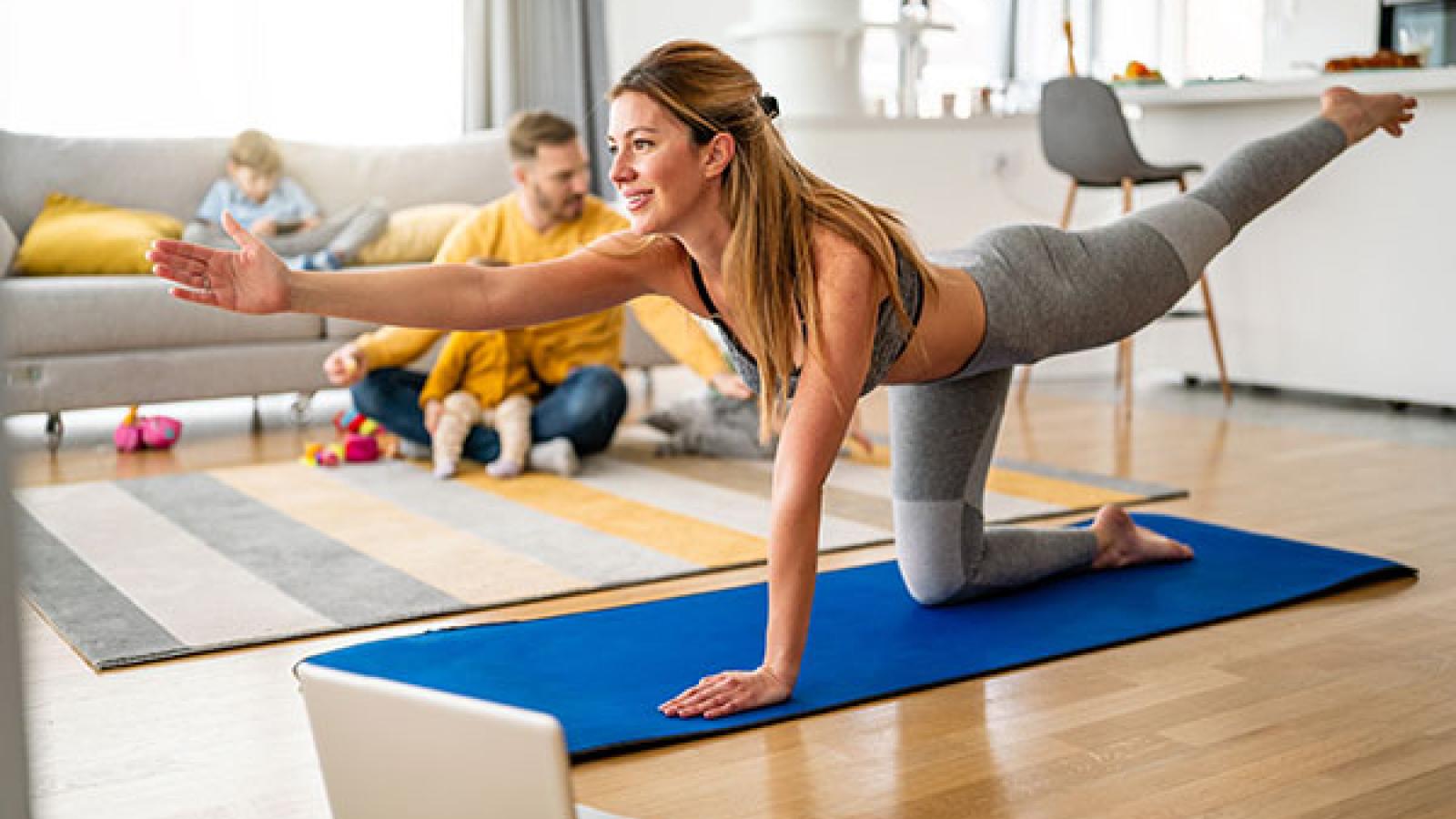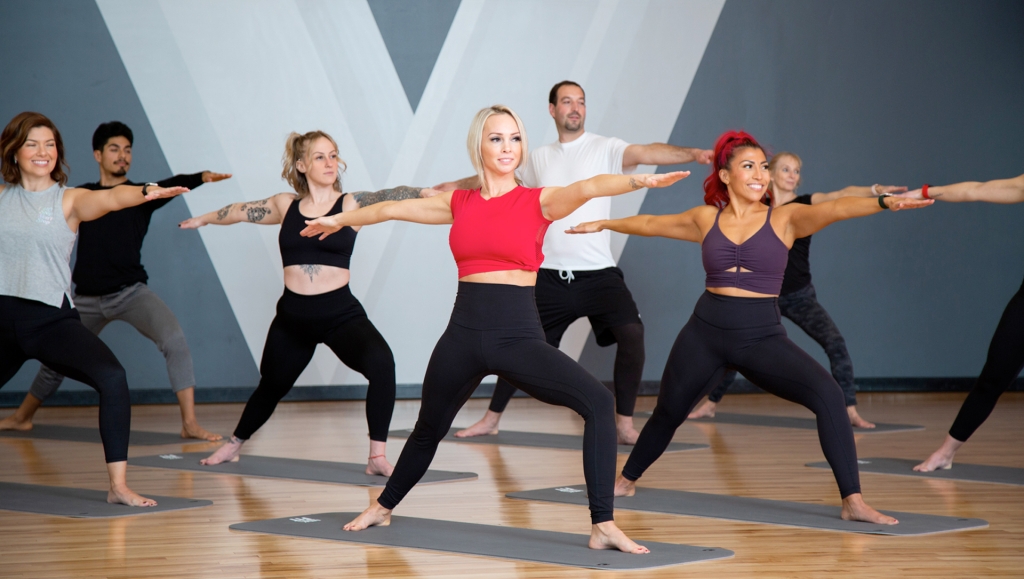Contents
I. Introduction

Welcome to the ultimate guide on how to stay motivated to achieve your fitness goals! Whether you’re just starting your fitness journey or you’ve hit a plateau, maintaining motivation can be a challenge. But don’t worry, we’ve got you covered. In this article, we’ll explore effective strategies and techniques to help you stay motivated and on track.
Staying motivated is crucial when it comes to achieving your fitness goals. It’s easy to get discouraged or lose focus along the way, but with the right mindset and tools, you can overcome any obstacles that come your way.
Throughout this guide, we’ll delve into various aspects of motivation, including setting realistic goals, finding your why, creating a supportive environment, and staying consistent. We’ll also discuss the importance of tracking your progress and celebrating small victories along the way.
Whether you’re aiming to lose weight, build muscle, improve endurance, or simply lead a healthier lifestyle, staying motivated is key. Remember, fitness is a journey, not a destination. It’s about making sustainable changes and embracing a positive mindset.
So, if you’re ready to take your fitness journey to the next level and stay motivated every step of the way, let’s dive in and discover the strategies that will help you achieve your fitness goals!
II. Setting Clear Fitness Goals

Setting clear and specific fitness goals is essential for staying motivated and achieving success in your fitness journey. When you have a clear goal in mind, it provides you with a sense of direction and purpose, making it easier to stay focused and committed. Here are some important factors to consider when defining your fitness goals:
Defining specific and measurable fitness goals
When setting fitness goals, it’s crucial to be specific and measurable. Vague goals like “getting fit” or “losing weight” can be difficult to track and achieve. Instead, break down your goals into specific targets that can be measured. For example, instead of aiming to “lose weight,” set a goal to “lose 10 pounds in three months.” This specific and measurable goal allows you to track your progress and stay motivated.
Additionally, consider setting goals related to different aspects of fitness, such as strength, endurance, flexibility, or body composition. This will help you create a well-rounded fitness plan and ensure that you’re working towards overall improvement.
Remember to make your goals realistic and attainable. While it’s important to challenge yourself, setting unrealistic goals can lead to frustration and disappointment. Take into account your current fitness level, lifestyle, and any limitations you may have. Setting achievable goals will keep you motivated and prevent burnout.
Importance of setting realistic and achievable goals
Setting realistic and achievable goals is crucial for maintaining motivation and preventing discouragement. When your goals are within reach, you’re more likely to stay committed and enjoy the process of working towards them.
Unrealistic goals, on the other hand, can be demotivating and lead to feelings of failure. If you set a goal that is too ambitious or unrealistic, it may be difficult to make progress or see results. This can leave you feeling discouraged and tempted to give up.
By setting realistic goals, you create a positive and sustainable approach to fitness. You’ll be able to celebrate small victories along the way and stay motivated to continue working towards your larger goals. Remember that progress takes time, and it’s important to be patient with yourself.
III. Creating a Personalized Fitness Plan

When it comes to achieving your fitness goals, one of the most important steps is creating a personalized fitness plan. This plan will serve as your roadmap, guiding you towards success and keeping you motivated along the way. In this section, we will explore the key elements of creating a personalized fitness plan, including assessing your current fitness level and designing a workout routine that aligns with your individual goals and preferences.
Assessing current fitness level and identifying areas for improvement
Before you can create a personalized fitness plan, it’s important to assess your current fitness level. This will help you understand where you are starting from and identify areas for improvement. There are several ways you can assess your fitness level:
- Body composition analysis: This involves measuring your body fat percentage, muscle mass, and other key metrics to get a comprehensive understanding of your body composition.
- Cardiovascular fitness test: This can be done through activities such as running, cycling, or swimming to measure your cardiovascular endurance.
- Strength assessment: This involves testing your strength through exercises like push-ups, squats, or lifting weights.
- Flexibility assessment: This can be done through exercises that test your range of motion, such as touching your toes or performing a split.
By assessing your current fitness level, you can identify areas that need improvement and set specific goals to work towards. For example, if you find that your cardiovascular fitness is lacking, you can focus on incorporating more cardio exercises into your workout routine.
Designing a workout routine that aligns with individual goals and preferences
Once you have assessed your current fitness level, the next step is to design a workout routine that aligns with your individual goals and preferences. Here are some key factors to consider:
- Goal setting: Clearly define your fitness goals, whether it’s losing weight, building muscle, improving endurance, or a combination of these. Setting specific, measurable, attainable, relevant, and time-bound (SMART) goals will help you stay focused and motivated.
- Exercise selection: Choose exercises that target the specific muscle groups or fitness components you want to improve. This can include a combination of cardiovascular exercises, strength training, and flexibility exercises.
- Frequency and duration: Determine how often you will exercise and for how long. This will depend on your schedule, fitness level, and goals. Aim for a balance between challenging yourself and allowing for adequate rest and recovery.
- Progression: As you become fitter and stronger, it’s important to progressively increase the intensity, duration, or complexity of your workouts. This will ensure that you continue to challenge your body and avoid plateauing.
- Variety and enjoyment: Incorporate a variety of exercises and activities that you enjoy. This will make your workouts more enjoyable and sustainable in the long run. It can include activities such as hiking, dancing, swimming, or participating in group fitness classes.
Remember, everyone’s fitness journey is unique, and what works for one person may not work for another. It’s important to listen to your body, make adjustments as needed, and seek guidance from a qualified fitness professional if necessary.
IV. Tracking Progress

Tracking progress is an essential aspect of staying motivated on your fitness journey. When you can see tangible evidence of your hard work and dedication, it becomes easier to stay committed and continue pushing forward. Tracking progress allows you to celebrate your achievements, identify areas for improvement, and make necessary adjustments to your fitness routine.
One effective way to track progress is by utilizing fitness apps and wearable devices. These technological tools provide valuable insights into various aspects of your fitness journey, such as your daily activity levels, heart rate, calories burned, and even sleep patterns. By monitoring these metrics, you can gain a deeper understanding of your body’s response to exercise and make informed decisions about your training and nutrition.
Fitness apps offer a convenient way to track your progress right from your smartphone. They allow you to log your workouts, set goals, and monitor your performance over time. Many apps also provide personalized workout plans and nutrition guidance based on your specific goals and preferences. With the ability to track your progress in real-time, you can easily stay motivated and accountable to your fitness goals.
Wearable devices, such as fitness trackers and smartwatches, take tracking progress to the next level. These devices can monitor your heart rate, steps taken, distance covered, and even provide insights into your sleep quality. They offer a comprehensive overview of your daily activity levels and help you understand how your lifestyle choices impact your overall health and fitness.
One of the key benefits of using fitness apps and wearable devices is the ability to set achievable goals and track your progress towards them. Whether you want to lose weight, build muscle, or improve your cardiovascular endurance, these tools can help you stay on track and measure your success along the way. Seeing your progress unfold in real-time can be incredibly motivating and encourage you to keep pushing towards your goals.
Moreover, fitness apps and wearable devices often come with social features that allow you to connect with like-minded individuals and share your progress with others. This sense of community can provide additional support and motivation as you embark on your fitness journey. You can celebrate milestones together, exchange tips and advice, and even participate in friendly challenges to keep the motivation high.
V. Building a Support System

When it comes to staying motivated and achieving your fitness goals, having a strong support system can make all the difference. Surrounding yourself with like-minded individuals who share your passion for fitness can provide the motivation and accountability you need to stay on track. Additionally, joining fitness communities or hiring a personal trainer can offer additional support and guidance along your fitness journey.
Finding Like-Minded Individuals
One of the best ways to stay motivated is by surrounding yourself with like-minded individuals who share your fitness goals. Whether it’s friends, family members, or colleagues, having a support system of individuals who understand and support your fitness journey can be invaluable.
Consider joining fitness groups or clubs in your local community. These groups often organize regular workouts, challenges, and events that can help keep you motivated and engaged. You’ll have the opportunity to meet new people who share your interests and can provide encouragement and support along the way.
Another option is to find workout buddies who have similar fitness goals. Having a workout partner can make exercising more enjoyable and provide the necessary accountability to stick to your routine. You can schedule regular workout sessions together, share tips and advice, and celebrate each other’s progress.
The Benefits of Hiring a Personal Trainer
If you’re looking for additional support and guidance, hiring a personal trainer can be a game-changer. A personal trainer is a fitness professional who can create a customized workout plan tailored to your specific goals and needs. They have the knowledge and expertise to design effective workouts, provide proper form and technique guidance, and keep you motivated throughout your fitness journey.
Working with a personal trainer can help you stay accountable and committed to your fitness goals. They will hold you to a higher standard, pushing you to give your best effort during each workout session. They can also provide valuable feedback and adjust your training program as needed to ensure you continue making progress.
Additionally, a personal trainer can offer valuable advice on nutrition and lifestyle choices that can complement your fitness routine. They can help you develop healthy habits and make sustainable changes to your diet, ultimately enhancing your overall well-being.
Online Fitness Communities
In today’s digital age, there are numerous online fitness communities that can provide support and motivation. These communities often consist of individuals from all around the world who share a common interest in fitness and wellness.
Joining an online fitness community can offer a sense of belonging and connection, even if you don’t have access to local fitness groups. These communities typically have forums or social media groups where members can interact, share their progress, ask questions, and provide support to one another.
Participating in online challenges or virtual fitness events organized by these communities can also help you stay motivated and engaged. These challenges often provide a sense of friendly competition and can push you to reach new heights in your fitness journey.
VI. Overcoming Challenges and Plateaus
In any fitness journey, it is common to encounter challenges and plateaus that can hinder progress and motivation. However, with the right strategies and mindset, these obstacles can be overcome. In this section, we will explore some effective ways to overcome common challenges and deal with plateaus in order to continue making progress towards your fitness goals.
1. Setting Realistic Expectations
One of the biggest challenges many people face in their fitness journey is setting unrealistic expectations. It is important to remember that achieving your fitness goals takes time and effort. Instead of expecting immediate results, focus on setting realistic goals that are achievable within a reasonable timeframe.
By setting realistic expectations, you can avoid feeling discouraged or frustrated when progress is slower than anticipated. Celebrate small victories along the way and stay committed to your fitness routine, knowing that each step forward is a step closer to your ultimate goal.
2. Finding Motivation
Another common challenge in the fitness journey is finding and maintaining motivation. It is normal to experience fluctuations in motivation, but there are strategies that can help you stay motivated even during challenging times.
One effective strategy is to find a workout routine or activity that you enjoy. When you enjoy what you are doing, it becomes easier to stay motivated and consistent. Experiment with different types of exercises and activities to find what works best for you.
Additionally, setting short-term goals can provide a sense of accomplishment and keep you motivated. Break down your long-term fitness goals into smaller, achievable milestones. Each time you reach a milestone, reward yourself and set a new goal to keep the momentum going.
3. Seeking Support
Embarking on a fitness journey can sometimes feel overwhelming, and having a support system can make a significant difference. Surround yourself with like-minded individuals who share similar goals and values.
Consider joining a fitness community or finding a workout buddy who can provide support, encouragement, and accountability. Having someone to share your progress, challenges, and successes with can help you stay motivated and committed to your fitness routine.
4. Varying Your Workout Routine
Plateaus are a common occurrence in fitness journeys. When your body becomes accustomed to a certain workout routine, it may no longer respond as effectively. To overcome plateaus and continue making progress, it is important to vary your workout routine.
Try incorporating different types of exercises, such as strength training, cardio, and flexibility exercises. This not only challenges your body in new ways but also prevents boredom and keeps your workouts interesting.
Additionally, consider changing the intensity, duration, or frequency of your workouts. High-intensity interval training (HIIT) and circuit training are effective ways to challenge your body and break through plateaus.
5. Tracking Your Progress
Tracking your progress is essential for staying motivated and overcoming plateaus. Keep a record of your workouts, including the exercises performed, sets, reps, and weights used. This allows you to track your progress over time and identify areas where you can make improvements.
Consider using fitness apps or wearable devices that can track your steps, heart rate, and calories burned. These tools provide valuable data that can help you make informed decisions about your fitness routine and track your progress more accurately.
6. Prioritizing Recovery
Recovery is an often overlooked aspect of a fitness journey, but it is crucial for making progress and preventing injuries. Overtraining can lead to burnout and hinder your progress. Make sure to prioritize rest days and incorporate active recovery activities, such as yoga or stretching, into your routine.
Additionally, proper nutrition and hydration are essential for recovery. Fuel your body with nutritious foods and stay hydrated to support muscle repair and growth.
VII. Incorporating Variety in the Workout Routine
When it comes to staying motivated to achieve your fitness goals, one of the key factors is incorporating variety in your workout routine. Doing the same exercises day in and day out can quickly lead to boredom and burnout. By exploring different types of exercises and activities, as well as trying out new fitness trends and workout classes, you can keep your workouts fresh, exciting, and effective.
Importance of incorporating different types of exercises and activities
Engaging in a variety of exercises and activities is essential for several reasons. Firstly, it helps prevent plateaus in your fitness progress. When you consistently do the same exercises, your body becomes accustomed to the movements, and the benefits you initially experienced start to diminish. By incorporating different types of exercises, you challenge your body in new ways, which can lead to continued progress and improved results.
Secondly, incorporating variety in your workout routine helps prevent overuse injuries. When you repeatedly perform the same movements, you put excessive stress on certain muscles and joints, increasing the risk of strains, sprains, and other injuries. By diversifying your exercises, you distribute the workload across different muscle groups, reducing the strain on any one area.
Furthermore, incorporating different types of exercises and activities allows you to target different fitness components. For example, cardiovascular exercises like running or cycling improve your endurance, while strength training exercises like weightlifting or bodyweight exercises enhance your strength and muscle tone. By including a mix of exercises, you can work on multiple aspects of fitness, leading to a well-rounded and balanced physique.
Exploring new fitness trends and trying out different workout classes
One exciting way to incorporate variety in your workout routine is by exploring new fitness trends and trying out different workout classes. The fitness industry is constantly evolving, with new trends and classes emerging regularly. By staying open to these trends and classes, you can discover new activities that you enjoy and that challenge your body in unique ways.
For example, you might try high-intensity interval training (HIIT) classes, which involve short bursts of intense exercise followed by brief recovery periods. These classes are known for their efficiency and effectiveness in burning calories and improving cardiovascular fitness. Alternatively, you could explore yoga or Pilates classes, which focus on flexibility, balance, and core strength.
By trying out different workout classes, you also get the opportunity to learn from experienced instructors who can guide you in proper form and technique. They can provide valuable feedback and help you push your limits safely. Additionally, the social aspect of group fitness classes can be motivating and enjoyable, as you get to connect with like-minded individuals who share similar fitness goals.
When exploring new fitness trends and workout classes, it’s important to keep an open mind and be willing to step out of your comfort zone. Trying something new can be intimidating at first, but it can also be incredibly rewarding. You might discover a new passion or find a workout style that you truly enjoy, making it easier to stay motivated and committed to your fitness journey.
VIII. Proper Nutrition for Optimal Performance
As an avid fitness enthusiast and certified nutritionist, I understand the crucial role that nutrition plays in achieving fitness goals. Proper nutrition not only fuels the body for workouts but also aids in muscle recovery and overall performance. In this section, I will share some valuable insights and tips for maintaining a balanced diet to optimize your fitness journey.
Understanding the Role of Nutrition in Achieving Fitness Goals
Nutrition is the foundation of any successful fitness regimen. It provides the body with the necessary fuel to perform at its best and supports muscle growth and repair. When it comes to achieving fitness goals, whether it’s losing weight, building muscle, or improving athletic performance, nutrition plays a vital role.
One key aspect of nutrition is understanding macronutrients. These are the three main nutrients that our bodies require in large quantities: carbohydrates, proteins, and fats. Each macronutrient serves a specific purpose and should be included in a well-balanced diet.
Carbohydrates are the body’s primary source of energy. They provide the fuel needed for intense workouts and help replenish glycogen stores in the muscles. Good sources of carbohydrates include whole grains, fruits, vegetables, and legumes.
Proteins are essential for muscle repair and growth. They provide the building blocks needed to repair damaged muscle tissue and promote muscle protein synthesis. Lean meats, poultry, fish, eggs, dairy products, and plant-based protein sources such as beans, lentils, and tofu are excellent sources of protein.
Fats are often misunderstood but are crucial for overall health and performance. They provide energy, support hormone production, and aid in the absorption of fat-soluble vitamins. Healthy sources of fats include avocados, nuts, seeds, olive oil, and fatty fish.
In addition to macronutrients, it’s important to consider micronutrients, which are essential vitamins and minerals that our bodies need in smaller quantities. These micronutrients play a vital role in various bodily functions and should be obtained through a diverse and balanced diet.
Tips for Maintaining a Balanced Diet and Fueling the Body for Workouts
Now that we understand the importance of nutrition in achieving fitness goals, let’s explore some practical tips for maintaining a balanced diet and fueling the body for workouts:
- Plan your meals: Take the time to plan your meals in advance to ensure you’re getting a variety of nutrients throughout the day. Include a mix of lean proteins, complex carbohydrates, and healthy fats in each meal.
- Eat a pre-workout snack: Consuming a small snack before your workout can provide the energy needed to perform at your best. Opt for a combination of carbohydrates and protein, such as a banana with a tablespoon of nut butter or a Greek yogurt with berries.
- Stay hydrated: Proper hydration is essential for optimal performance. Drink water throughout the day and make sure to hydrate before, during, and after your workouts. If you’re engaging in intense or prolonged exercise, consider sports drinks to replenish electrolytes.
- Include post-workout nutrition: After a workout, your body needs nutrients to recover and repair. Aim to consume a combination of carbohydrates and protein within 30 minutes to an hour after your workout. This can be in the form of a protein shake, a balanced meal, or a snack like a turkey wrap with whole-grain bread.
- Focus on whole, unprocessed foods: When it comes to nutrition, quality matters. Choose whole, unprocessed foods whenever possible. These foods are rich in nutrients and free from added sugars, unhealthy fats, and artificial additives.
- Listen to your body: Everyone’s nutritional needs are unique. Pay attention to how different foods make you feel and adjust your diet accordingly. Experiment with different meal timings, portion sizes, and food combinations to find what works best for you.
Remember, nutrition is a journey, and it’s important to find a sustainable approach that aligns with your goals and preferences. Consulting with a registered dietitian or nutritionist can provide personalized guidance and support along the way.
By prioritizing proper nutrition and fueling your body with the right foods, you’ll be well on your way to achieving your fitness goals and optimizing your performance.
IX. Rest and Recovery
Rest and recovery are essential components of any fitness journey. In order to achieve your fitness goals, it is important to understand the importance of rest and recovery in preventing burnout and injuries. Incorporating rest days and practicing relaxation techniques can significantly enhance your overall well-being and help you stay motivated on your fitness journey.
Importance of rest and recovery in preventing burnout and injuries
Rest and recovery play a crucial role in preventing burnout and injuries. When you engage in intense physical activities, your body undergoes stress and strain. Without adequate rest, your muscles and joints may become fatigued, leading to a higher risk of injuries.
Rest days allow your body to repair and rebuild itself. During rest, your muscles have the opportunity to recover from the micro-tears that occur during exercise. This process helps to strengthen your muscles and improve their overall performance. Additionally, rest days give your central nervous system a chance to recharge, reducing the risk of mental and physical fatigue.
Moreover, rest and recovery help to prevent burnout. Pushing yourself too hard without giving your body enough time to rest can lead to physical and mental exhaustion. By incorporating rest days into your fitness routine, you can maintain a healthy balance between exercise and recovery, preventing burnout and keeping your motivation levels high.
Incorporating rest days and practicing relaxation techniques
When it comes to incorporating rest days into your fitness routine, it is important to listen to your body. Pay attention to any signs of fatigue or muscle soreness and adjust your training schedule accordingly. Rest days can be active or passive, depending on your preferences and goals.
Active rest days involve engaging in low-impact activities such as yoga, swimming, or walking. These activities help to promote blood flow and muscle recovery without placing excessive stress on your body. On the other hand, passive rest days involve complete rest and relaxation. This may include activities such as meditation, deep breathing exercises, or simply taking a day off from any physical activity.
Practicing relaxation techniques can also greatly contribute to your overall well-being and help you stay motivated on your fitness journey. Techniques such as deep breathing, meditation, and mindfulness can help reduce stress levels, improve sleep quality, and enhance your mental clarity. By incorporating these techniques into your daily routine, you can effectively manage stress and maintain a positive mindset, which is essential for long-term success in achieving your fitness goals.
When it comes to achieving your fitness goals, staying motivated can be a challenge. However, there are techniques that can help you maintain your motivation and keep you on track. Two powerful tools in this regard are visualization and positive affirmations. By utilizing these techniques, you can enhance your motivation, boost your self-belief, and increase your chances of success.
Utilizing visualization techniques to envision success
Visualization is a powerful technique that involves creating a mental image of yourself achieving your goals. By vividly imagining yourself succeeding, you can increase your motivation and belief in your ability to achieve your fitness goals.
When practicing visualization, it’s important to create a clear and detailed mental picture. Close your eyes and imagine yourself engaging in the activities that will lead to your success. See yourself working out, eating healthy meals, and making progress towards your goals. Visualize the positive changes in your body and the sense of accomplishment you will feel.
It’s also helpful to engage all your senses during visualization. Imagine the sounds, smells, and physical sensations associated with achieving your goals. The more vivid and realistic your visualization, the more effective it will be in boosting your motivation.
In addition to visualizing success, it can be beneficial to visualize overcoming obstacles and challenges. Imagine yourself facing and conquering the hurdles that may come your way. By mentally preparing for potential setbacks, you can increase your resilience and determination.
Practicing positive affirmations to boost motivation and self-belief
Positive affirmations are statements that you repeat to yourself to reinforce positive beliefs and attitudes. By regularly practicing positive affirmations, you can enhance your motivation, boost your self-belief, and overcome self-doubt.
To create effective positive affirmations, focus on statements that are specific, believable, and aligned with your goals. For example, instead of saying “I am fit,” you can say “I am becoming stronger and more fit every day.” By making your affirmations specific and realistic, you can increase their impact.
It’s important to repeat your positive affirmations consistently and with conviction. Find a quiet and comfortable space where you can say your affirmations out loud. Repeat them several times, allowing yourself to truly believe in the statements you are making. By regularly practicing positive affirmations, you can reprogram your subconscious mind and reinforce positive beliefs about yourself and your abilities.
Incorporating visualization and positive affirmations into your daily routine can have a profound impact on your motivation and belief in your ability to achieve your fitness goals. By regularly engaging in these practices, you can stay motivated, overcome challenges, and increase your chances of success.
